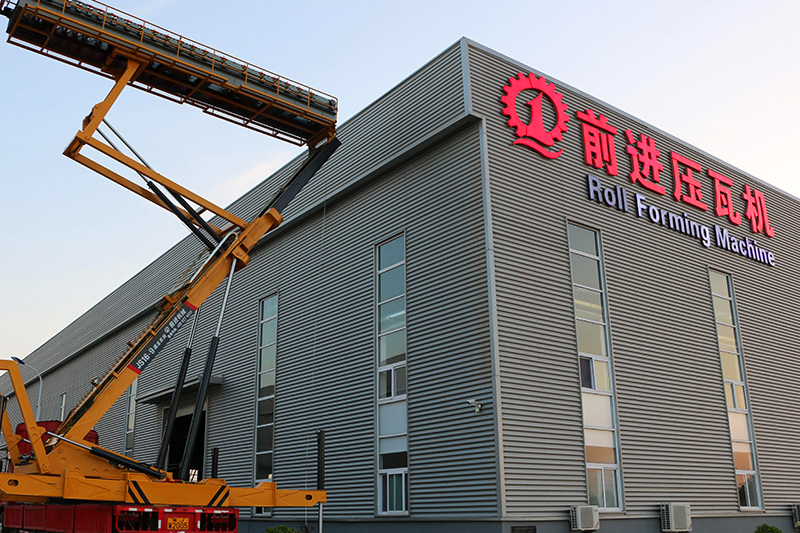Automatic Roll Forming Machines: A Comprehensive Exploration of Their Mechanisms and Benefits

Automatic Roll Forming Machines: A Comprehensive Exploration of Their Mechanisms
Table of Contents
- 1. Introduction to Automatic Roll Forming Machines
- 2. What is Roll Forming? An Overview
- 3. How Automatic Roll Forming Machines Work
- 4. Key Components of Roll Forming Machines
- 5. Advantages of Automatic Roll Forming Machines
- 6. Applications of Automatic Roll Forming Machines
- 7. Selecting the Right Roll Forming Machine for Your Needs
- 8. Maintenance and Troubleshooting Tips
- 9. Conclusion
- 10. Frequently Asked Questions (FAQs)
1. Introduction to Automatic Roll Forming Machines
Automatic roll forming machines play a significant role in the manufacturing industry, enabling the mass production of metal components with high precision and efficiency. These machines transform flat strips of material into desired shapes through a continuous bending process, making them indispensable for various applications, from construction to automotive parts.
In this article, we will delve into the mechanisms that drive these machines, their components, advantages, applications, and more. Understanding these elements will help you appreciate the value of automatic roll forming machines in today’s manufacturing landscape.
2. What is Roll Forming? An Overview
Roll forming is a manufacturing process that involves the gradual bending of a flat metal strip into a specific cross-sectional shape by passing it through a series of rollers. The process is characterized by its ability to produce long lengths of uniform profiles with consistent quality, making it ideal for high-volume production runs.
The key features of roll forming include:
- Continuous production: Unlike traditional methods that may require multiple setups, roll forming allows for a continuous flow of material.
- Versatility: The process can accommodate a variety of materials, including steel, aluminum, and copper.
- Minimal waste: Since the material is progressively shaped, waste is reduced compared to other manufacturing processes.
3. How Automatic Roll Forming Machines Work
Understanding the **mechanics of automatic roll forming machines** involves recognizing the steps in the roll forming process. The operation can be broken down into the following stages:
The Feeding Stage
The process begins with a flat metal strip, which is fed into the machine. Automatic roll forming machines often feature advanced feeding systems that ensure precise alignment and consistent material flow.
The Forming Stage
As the metal strip enters the machine, it passes through a series of rollers that incrementally shape it into the desired profile. Each roller is designed to perform a specific bending operation, contributing to the final shape of the material.
The Cutting Stage
Once the strip has been formed, it often needs to be cut to length. Automatic roll forming machines can incorporate in-line cutting systems that ensure optimal efficiency by cutting the finished profiles without interrupting the forming process.
4. Key Components of Roll Forming Machines
Automatic roll forming machines comprise several key components that work in harmony to ensure smooth operation:
Rollers
The rollers are the heart of the roll forming machine. Each roller is precisely engineered to shape the metal strip accurately. They are typically made of high-quality steel to withstand the pressure exerted during the forming process.
Feeding Mechanism
The feeding mechanism, often equipped with servo motors, controls the speed and accuracy of the metal strip's entry into the machine.
Cutting System
This component ensures that the formed profiles are cut to the correct lengths. It can be synchronized with the forming process for maximum efficiency.
Control Panel
Modern automatic roll forming machines feature sophisticated control panels that allow operators to adjust settings easily, monitor performance, and troubleshoot issues.
5. Advantages of Automatic Roll Forming Machines
Automatic roll forming machines offer several advantages over traditional fabrication methods, including:
High Production Rates
These machines can produce large volumes of components quickly, making them ideal for manufacturers looking to meet high demand.
Reduced Labor Costs
Automation reduces the need for manual labor, leading to lower operational costs and reduced human error.
Consistent Quality
The automated nature of roll forming ensures that each piece produced is of consistent quality and uniformity, thereby reducing waste.
Flexibility in Design
Automatic roll forming machines can easily adapt to different designs, allowing for rapid changes in production without significant downtime.
6. Applications of Automatic Roll Forming Machines
The versatility of automatic roll forming machines allows them to be utilized across various industries, including:
Construction
In the construction sector, roll forming machines produce metal framing, roofing components, and other structural elements.
Automotive
The automotive industry utilizes roll forming for manufacturing parts such as chassis components, brackets, and reinforcements.
HVAC
Heating, ventilation, and air conditioning systems often use roll-formed ducts and panels for efficiency and effectiveness.
7. Selecting the Right Roll Forming Machine for Your Needs
Choosing the right automatic roll forming machine involves considering several factors:
Material Type
Different materials may require specific machine features, so understanding the type of metal to be processed is crucial.
Profile Complexity
The complexity of the desired profiles should guide your choice of machine, as some may offer greater versatility than others.
Production Volume
Consider your production needs—higher volumes may necessitate machines with faster operational speeds and larger capacities.
8. Maintenance and Troubleshooting Tips
To ensure optimal performance of your automatic roll forming machine, regular maintenance is essential:
Routine Inspections
Conduct routine checks on all components to catch any signs of wear or damage early.
Lubrication
Keep all moving parts lubricated to reduce friction and enhance the lifespan of your machine.
Monitoring Performance
Utilize the control panel to monitor machine performance regularly. Address any irregularities immediately to prevent larger issues.
9. Conclusion
Automatic roll forming machines represent a significant advancement in manufacturing technology, offering efficiency, precision, and versatility. Understanding their mechanisms, advantages, and applications empowers manufacturers to leverage these machines effectively, thereby enhancing productivity and product quality. As industries continue to evolve, the role of automatic roll forming machines will only grow, making it imperative for businesses to stay informed about the latest advancements in this field.
10. Frequently Asked Questions (FAQs)
1. What materials can be processed using automatic roll forming machines?
Automatic roll forming machines can process various materials, including steel, aluminum, copper, and other metals.
2. How does roll forming differ from other metal fabrication methods?
Roll forming is a continuous process that shapes metal strips into desired profiles, while other methods may involve cutting or welding pieces together.
3. What are the typical production speeds of automatic roll forming machines?
Production speeds vary, but many machines can achieve rates of several feet per minute, depending on the complexity of the profile.
4. Can roll forming machines be customized for specific applications?
Yes, many manufacturers offer customization options to tailor roll forming machines to meet specific production requirements and design needs.
5. What is the lifespan of an automatic roll forming machine?
With proper maintenance, an automatic roll forming machine can last for many years, often exceeding a decade of operational use.
By exploring the complexities and benefits of automatic roll forming machines, manufacturers can better appreciate how these tools can optimize their production processes and meet evolving market demands.
Key words:
recommend News
Share



